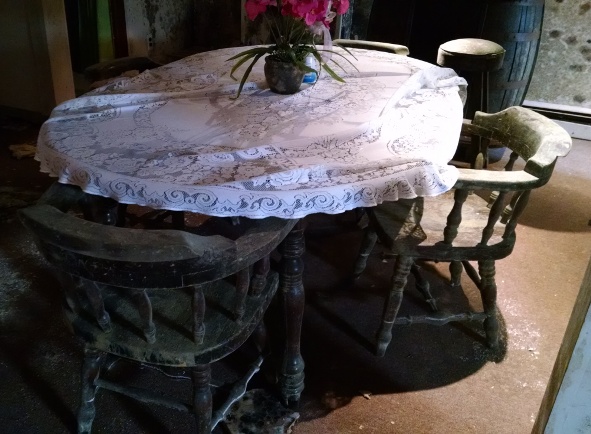Find a Mold Specialist Now
Click or Call, Toll-Free 24/7
Furniture Mold Removal
If furniture gets damp, it may become moldy. Unfortunately, furniture mold removal is not always possible. It depends on the type of furniture and the extent of the mold, but in many cases, furniture has to be discarded and replaced. We’ll explain why, tell you when furniture might be saved, and explain how to remove mold from furniture when it is possible. We’ll also tell you how to get help removing mold from furniture.
Of course, if you have moldy furniture, there is a good chance there is mold elsewhere in your home. We’ll tell you how to get a free home inspection to check for mold at the end of this article.
Why Is Furniture Mold Removal So Difficult?
Removing mold from furniture is difficult primarily due to the fact that most furniture is made from porous material, such as fabric or wood, or at least contains these materials. As the term suggests, porous materials have tiny pores or openings in them. The pores aren’t visible to the naked eye, but microscopic mold spores get into the pores and it’s impossible to remove them all.
Even if the furniture looks clean, mold can later begin to grow again. All it takes is a little moisture. In addition, furniture may retain a musty smell characteristic of mold (why mold has that musty odor and what to do about it). Mattresses may be particularly likely to retain a musty odor.
You may be able to remove mold from furniture made from nonporous materials, like metal or glass. It’s much easier to remove mold from those kinds of things. With wooden furniture and with fabric components of furniture like cushions, you’ll often have to discard the pieces and replace them.
Removing Mold from Glass or Metal Furniture
This will be the easiest type of furniture to clean, at least if it is made completely from glass or metal. Often, however, furniture is not made completely of metal or glass but has metal or glass components, like a table with a glass top. In that case, you should clean the metal or glass as described here and clean the rest of the piece according to the type of material from which it is made.
To remove mold from glass or metal, use an antimicrobial cleanser designed to remove mold. We don’t recommend using bleach because it can damage some metal surfaces. Follow this link to read about mold removal products, including our preferred product.
Follow the directions on the mold removal product you choose and rinse the furniture well when done. Then dry the furniture well.
Wooden Furniture Mold Removal
If mold is observed growing on the finished wood components of furniture, such as on the legs of a couch, and the mold re-appears on the wood components a few days after the mold is cleaned off, then the mold apparently has penetrated below the surface of the finished wood. The furniture may have to be disposed of. Alternatively, the wood can be lightly sanded to remove a layer of finished wood and the mold, and the wood can be re-finished. Exposure to UV rays from direct sunlight may be effective in killing mold that has grown into the surfaces of the wood components of upholstered furniture. Therefore, try placing the furniture outdoors in the direct sunlight for a few hours, and then re-clean the wood.
If you have valuable wooden furniture that you really want to save, we recommending consulting a mold remediation professional. If the furniture isn’t worth a lot and doesn’t have sentimental value to you, it may be easer – and less costly – to simply replace it.
Dealing with Moldy Fabric
Unfortunately you can’t get mold out of fabric. Things like couch cushions and mattresses that have gotten moldy must be discarded and replaced. Rugs should also be discarded once mold begins to grow on them. If it is a valuable rug you can consult with a mold expert about possible options, but for most rugs it is more cost effective to simply replace them.
For Help with Furniture Mold Removal
If you need help with mold removal, or if you just want some advice from a professional on the subject, we recommend scheduling a free consultation with a mold removal professional. An experienced professional will visit your home, inspect for mold, and advise you about the mold removal work that needs to be done. There’s no cost to you and no obligation on your part. To find qualified mold removal professionals offering free consultations in your area, just follow the link.
Return From Furniture Mold Removal To Our Removal Guide
Privacy Policy Terms and Conditions Accessibility Do Not Sell My Information Disclaimer Contact Us





